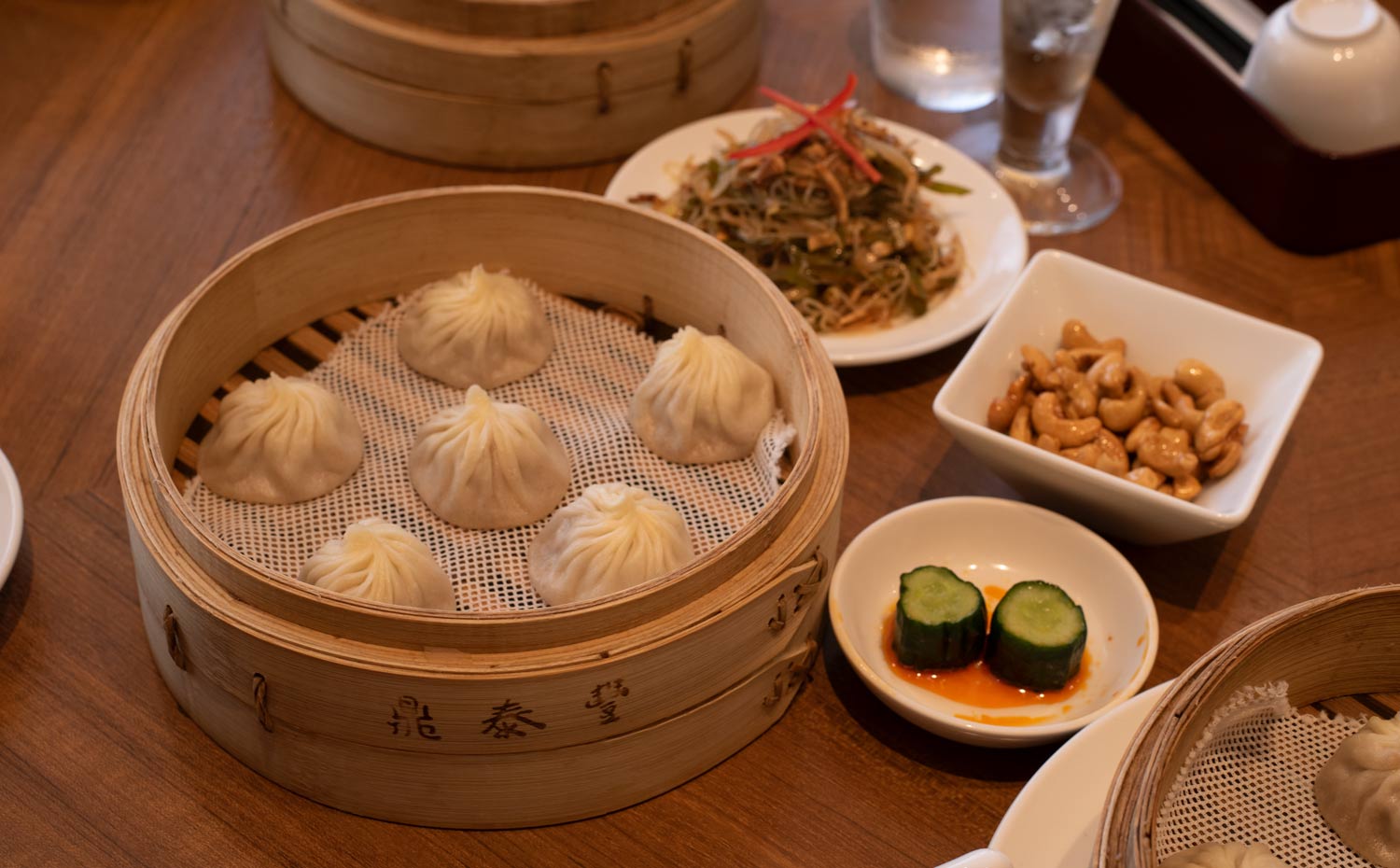Din Tai Fung Sightings
Photos by Forrest Anderson
My favorite restaurant in the whole world, Din Tai Fung, is the product of a cuisine born of a monumental national tragedy – the 1949 split between the Chinese mainland and the island of Taiwan.
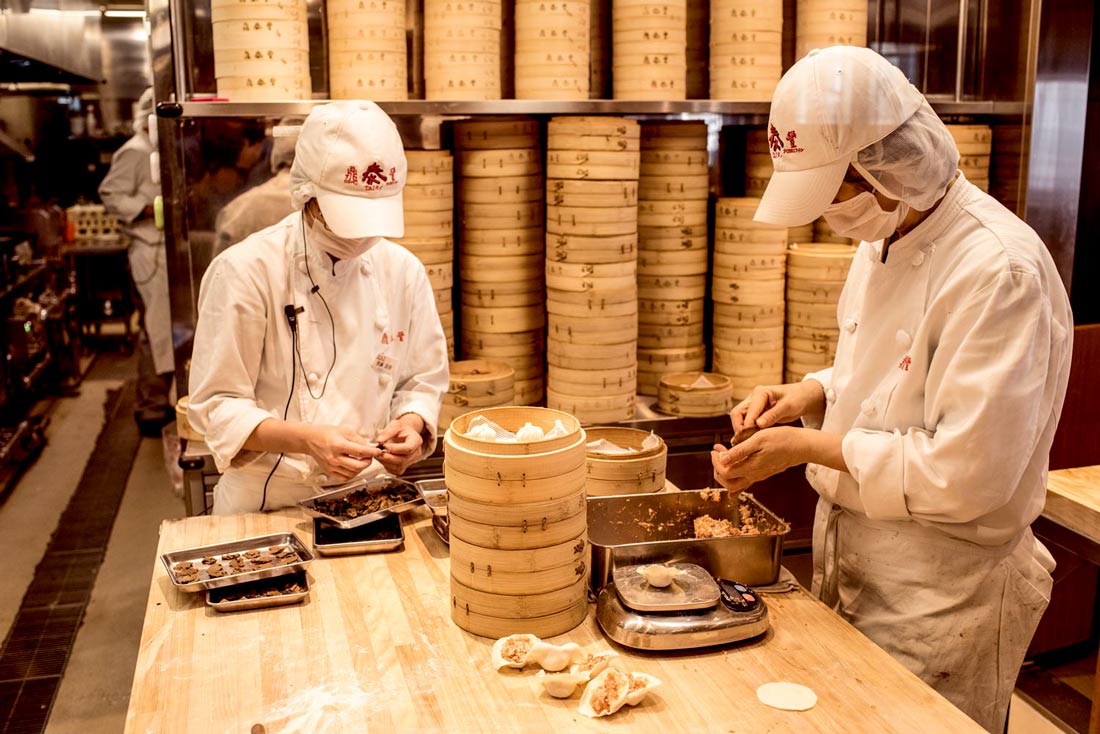
Chefs at Din Tai Fung in Tokyo making xiaolong bao.
Before 1949, Taiwanese cuisine was largely a fusion of the cuisine of three cultures - southern Chinese foods brought to Taiwan by emigrants from China hundreds of years earlier, dishes from Taiwan’s native aboriginal groups and Japanese-influenced cuisine that entered Taiwan along with the 1895-1945 Japanese occupation of the island.
When in 1949 the Chinese Communists took over mainland China, their Nationalist rivals retreated to Taiwan including part of the Nationalist army. Among the Nationalists were both well-known chefs and ordinary soldiers from all over China, who took with them their local cuisines. After they were discharged from the army, these veterans were unable to return to mainland China because the rival governments of China and Taiwan remained at war. Many veterans opened street stalls where they sold special dishes from their home provinces, adapted to local ingredients and eventually taste.
By the time I went to Taiwan, these men were elderly. I stopped at such stalls almost daily to sample their delicious foods, which they sold for pennies. They introduced me to the joys of Taiwan’s fusion cuisine as they told me in thick mainland accents about their dishes, their relatives on the mainland from whom they were separated and in many cases the families they had formed by marrying Taiwanese women. I sipped their steaming bowls of soup and noodles or savored their juicy steamed dumplings as I peppered them with questions about China. When I would compliment them on their food, they inevitably would shake their heads and reply sadly, “It’s not as good as it is back on the mainland.”
These weathered, wrinkled vendors whose accents I often struggled to understand instilled in me a burning desire to experience food in mainland China. I later lived and worked in China and ate my way through most of China’s provinces. However, I first tasted the dishes of Guangdong, Jiangxi, Shanghai, Hunan, Sichuan and Beijing on the streets of Taiwan, and those superb street chefs forever became the standard by which I judged Chinese cooking. Although I became obsessive about mainland Chinese food, it never excelled Taiwan’s delightful fusion food, which combines the above-mentioned cultural influences with the island’s fresh high quality fish, vegetables and tropical fruits.
Steamed dumplings, stir-fried vegetables and noodle soup, polished off with papaya, starfruit, watermelon or citrus fruit, is my idea of a perfect meal. Vegetables in Taiwan dishes are inevitably fresh and flavorful and many vegetable dishes are the result of the island’s Buddhist tradition of highly skilled vegetarian chefs.
Taiwan’s warm climate also lends itself to flourishing night markets filled with “small eats” or “xiaochi,” which range from a variety of dumplings, egg rolls, steamed and fried breads, puff pastries, grilled meats and tempura to fruit shakes, yogurt milks, shaved ice fruit deserts, crepes adapted from French ones, meat wrapped in leaves aboriginal style, fried peanuts and various kinds of pickles. They include a sprinkling of American influence, including sweet corn-on-the-cob and dishes infused with American ketchup, the result of U.S. servicemen who were once stationed at bases on the island.
Din Tai Fung’s cooking arose from this rich fusion culture. Yang Bingyi, who was born in China’s Shanxi province, went to Taiwan with the Nationalists in 1948 and married a Hakka woman named Lai Penmei. Hakka, descended from the Hakka-speaking people who live in several areas of China, make up about 20 percent of Taiwan’s population. Many Hakkas migrated to Taiwan from the mainland hundreds of years ago.
Yang worked at a cooking oil company called Heng Tai Fung for ten years before he and his wife founded a cooking oil company named Din Tai Fung in 1958. The name was a combination of his former employer’s name and his new supplier’s company name, “DinMei Oils.” When Yang’s business diminished with the advent of tinned cooking oil in 1970, he and his wife converted half of their shop on Xinyi Road in Taipei to selling xiaolong bao or "small basket dumplings." The dumplings soon became so popular that the shop stopped selling oil in 1972 and converted their entire shop to a restaurant.
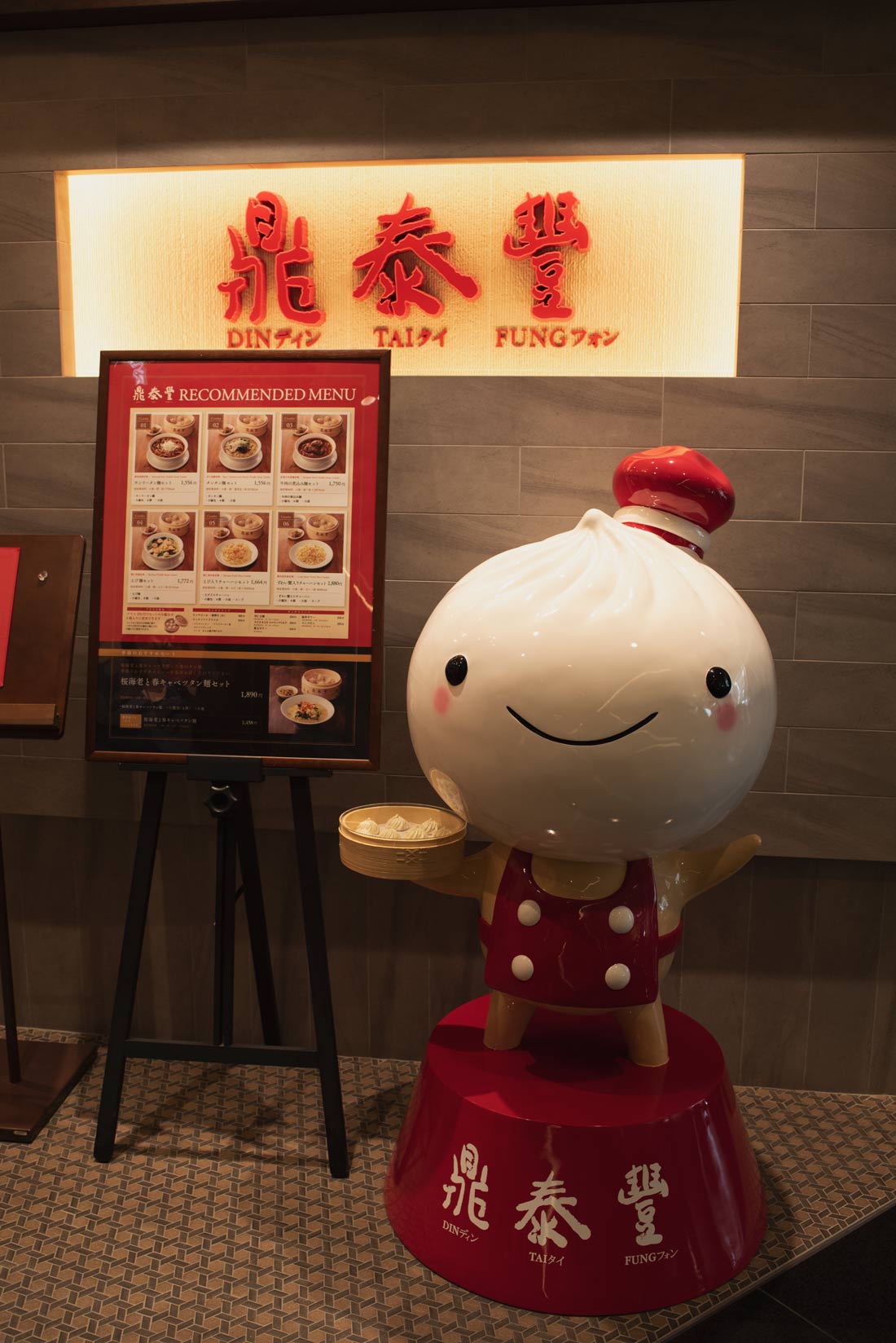
The entrance to Din Tai Fung in Tokyo.
Xiaolong bao are my favorite Chinese dish. Xiaolong bao are buns that contain a meat filling mixed with a delicious flavored gelatinous broth that melts while the bun is being steamed in a layered bamboo basket, so that when you bite into one, there is a burst of flavor from the soup spilling from the bun into your mouth.
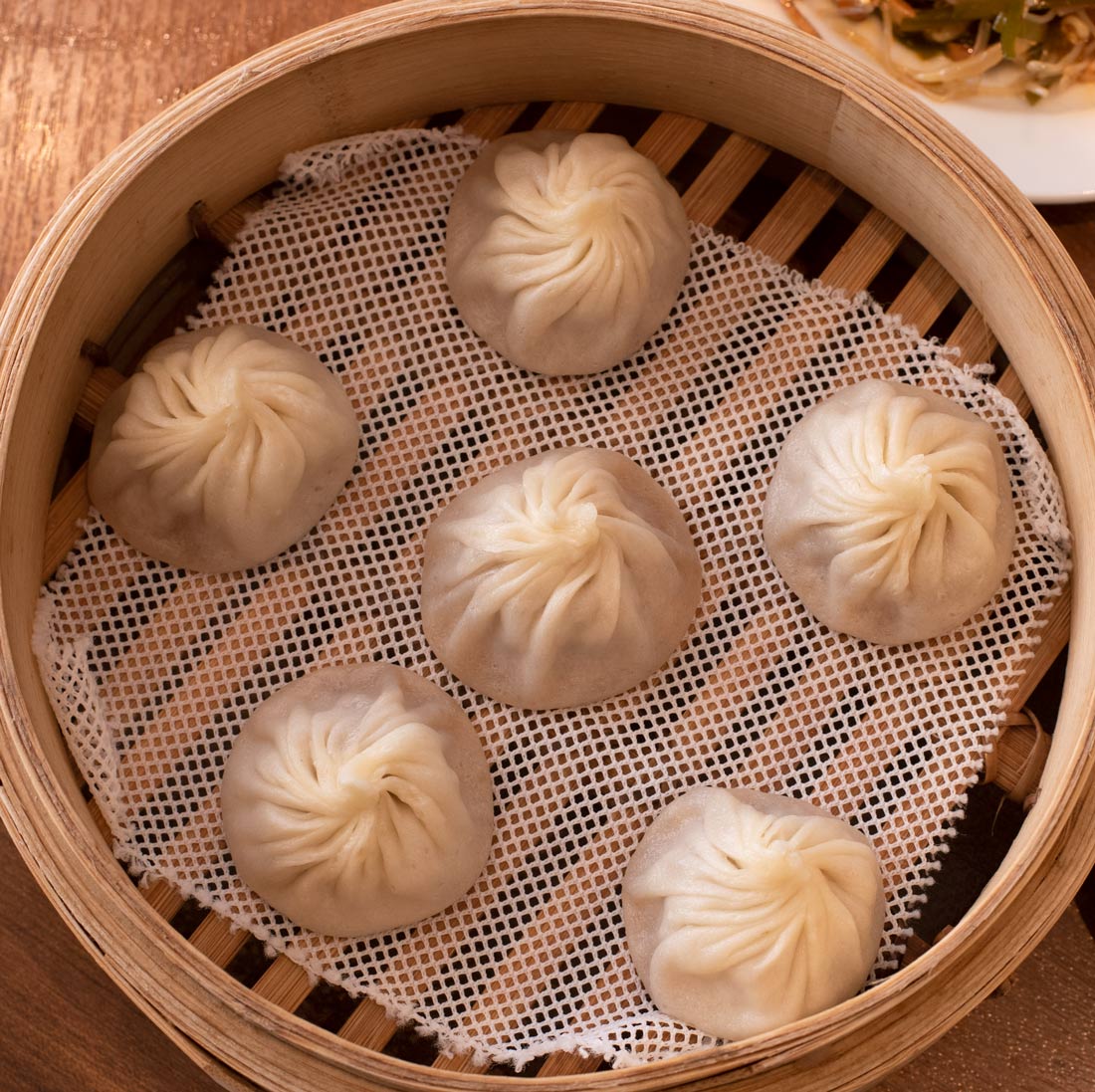
Xiaolong bao at Din Tai Fung in Tokyo.
The restaurant also serves dishes in the mild cooking style of Huaiyang cuisine, which originated in a region in China’s Jiangsu Province that is considered one of China's great cooking heritages. The cuisine is known for using Zhenjiang vinegar, which is produced in the Jiangsu area of China.
The owners of Din Tai Fung infused into the cooking of these common dishes high quality recipes, precision and ingredients that gave the restaurant rave reviews in food magazines and newspapers worldwide. In 1993, the New York Times rated the restaurant as one of the top ten gourmet restaurants in the world, the only Taiwanese restaurant on the list. The first international location opened in Tokyo in 1996 and the first U.S. one in Arcadia, California, in 2000. Today, Din Tai Feng has more than 150 restaurants, in Japan, China, the United States, Australia, South Korea, Singapore, Indonesia, Malaysia, the Philippines, Australia, Britain, Thailand and the United Arab Emirates. We usually eat at Din Tai Fung in California or Tokyo, but have enjoyed meals at the London restaurant at Covent Garden as well.
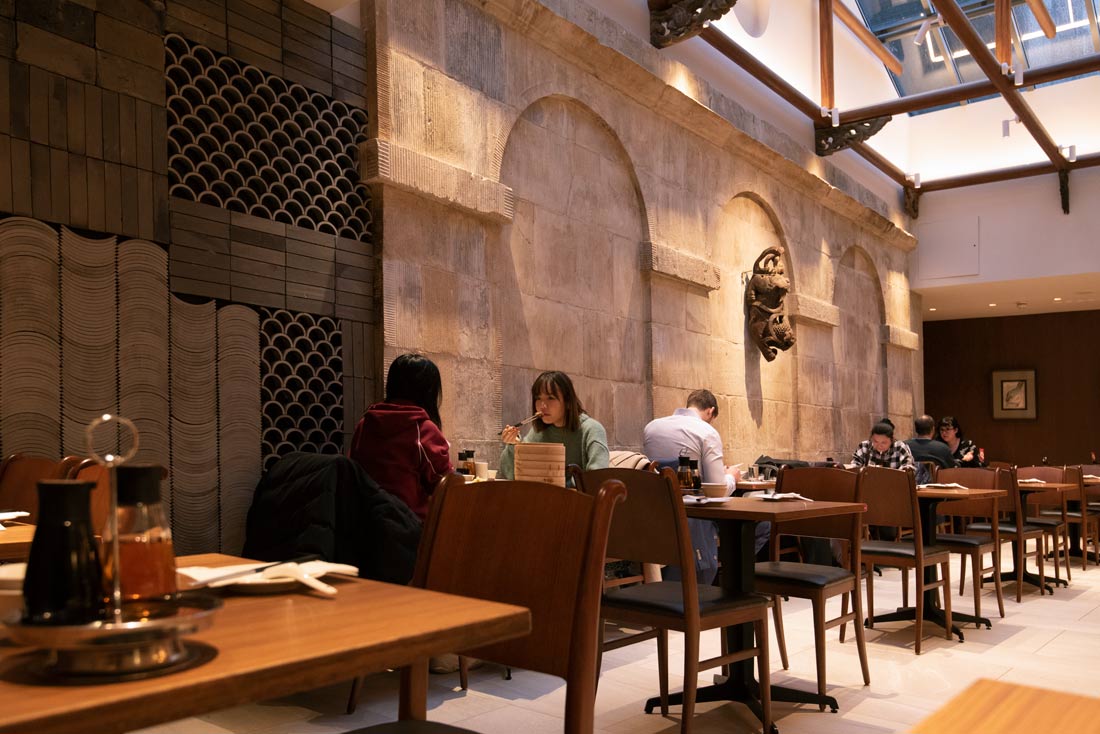
Din Tai Fung at Covent Garden in London.
The Yangs’ son, Yang Chi Hua, is the company’s chairman. He claims that “I only know how to make xiaolong bao.” His obsession with high quality and standardization of dishes has driven the company’s international success. Din Tai Fung combines traditional, common Chinese dishes with fresh, high quality ingredients and the meticulous emphasis on precision, quality and efficiency that Taiwan’s culture became known for during the Japanese occupation and developed further during the island’s modernization. No matter which Din Tai Fung restaurant you eat in, the dumplings are prepared the same way. You can watch the chefs do it in a glass-fronted kitchen. They wear white coats, baseball caps, hair nets and face masks as they meticulously weigh and roll out the dough and measure the filling. The chefs train for each task for several months and then have to pass a test before moving on to another task.
The secret to Din Tai Fung is making a perfect version of an ordinary but popular Taiwanese food for a mass audience. I’ve tried and failed to duplicate their addictive dumplings at home using an on-line copycat recipe. My filling has turned out well, but I haven’t mastered the silky translucent wrappers, which food aficionados say are the key to Din Tai Fung’s success. The wrapper must be thin but strong enough to hold the hot soup without tearing. Din Tai Fung has gotten this tricky step exactly right and has standardized it in their restaurants worldwide. It’s common for chefs at a Din Tai Fung restaurant to make 2,000 xiaolong bao every weekday and 3,500 every weekend, which is 17,000 pork soup dumplings every week. This doesn’t include the other dumplings and dim sum offerings on the menu.
Xiaolong bao making is divided into four parts – dough, assembling the dumplings, arranging them in the steaming baskets, and steaming. The dough is cut into small pieces that are formed into balls and weighed. Each ball must weigh 16 grams. A chef then rolls it out to create small circular wrappers that are passed to a chef, who adds the five grams of filling, which is a mix of minced pork, seasonings and a gelatinous soup broth. Theoretically, the filling is wrapped into a dumpling with 18 folds, which Din Tai Feng’s management says is the golden ratio for making a perfect xiaolong bao. I'm always too focused on inhaling the dumplings to count their pleats, so I can't verify this. Once a layer of the bamboo steaming baskets is filled with six xiaolong bao, it goes to the steaming section, a large stovetop filled with holes from which steam rises. Baskets are placed over the holes to cook. This is the most challenging part of the process, as the chefs have to manage different kinds of dim sum with different steaming times. The staff keep a daily work journal that is used to make improvements.
Key ingredients such as rice, flour and soy sauce are exported from Taiwan to each Din Tai Fung restaurant to maintain consistency from restaurant to restaurant, while fresh ingredients are acquired locally. The restaurant has become so successful that it is used in business schools worldwide as a case study of the successful spreading of local products to a global audience.
Din Tai Fung gives its customers instructions on how to eat xiaolong bao, placing vinegar and soy sauce in the spoon and then picking up the xiaolong bao with chopsticks and dipping it into the spoon before eating them. I never pay attention to the instructions, though. I just dig in.
Among our standard question when we travel to any major city is “do they have a Din Tai Fung?” We’re not alone. The restaurant chain has devoted fans worldwide. Some have timed how long it takes them to get from the airport to a Din Tai Fung.
Din Tai Fung also serves excellent pot stickers, noodles, wontons, fried rice, soups and fried noodles as well as Asian beverages.
Our favorite Din Tai Feng feast is xiaolong bao, a cucumber salad, dry-fried green beans, a noodle soup, a seaweed-tofu salad that I could eat for three meals every day and fruit drinks.
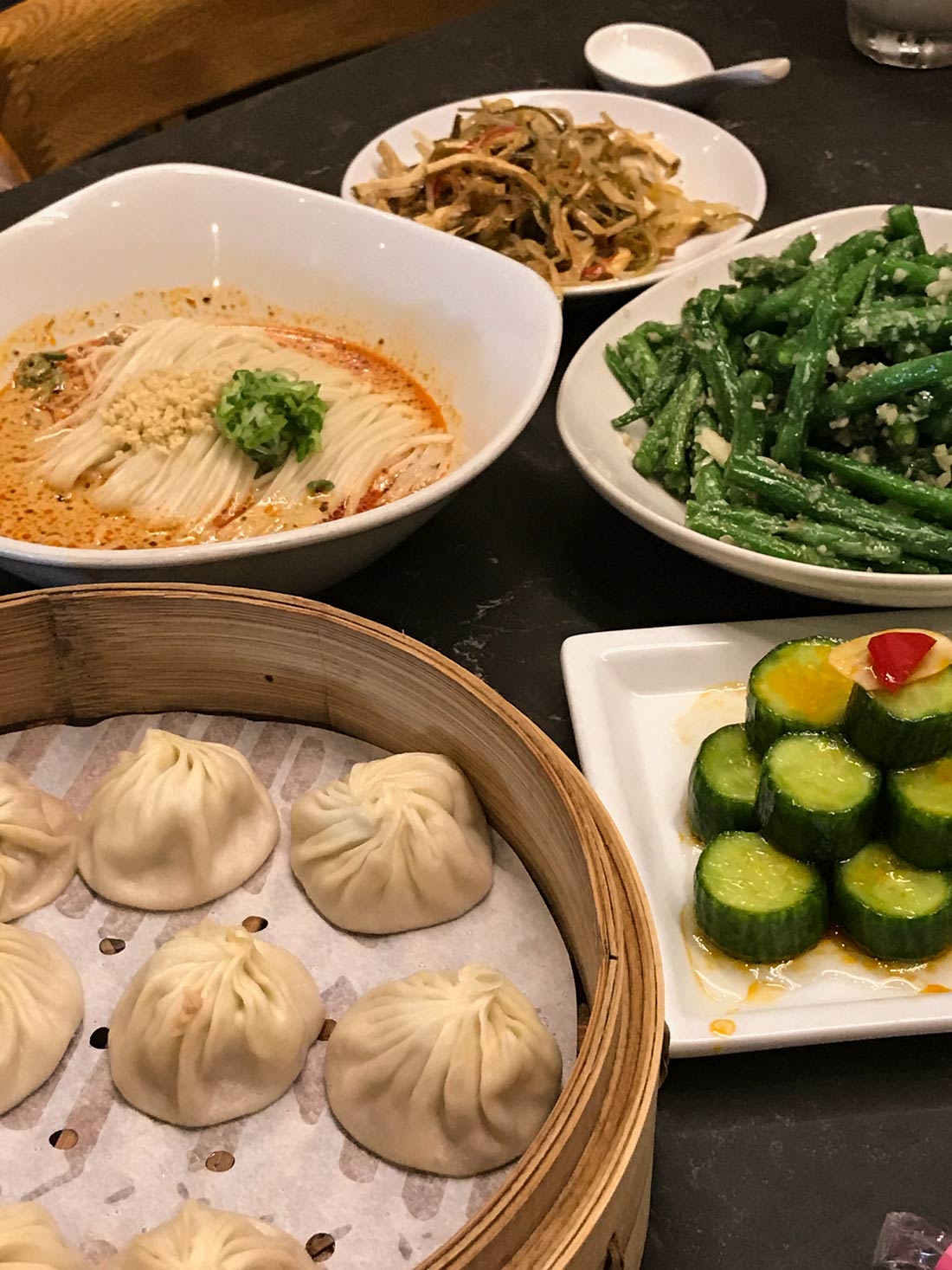
Ideal Din Tai Fung meal - xiaolong bao, cucumbers, dry-fried green beans, noodles and seafood-tofu salad.

Seafood-tofu salad.

Cucumbers.
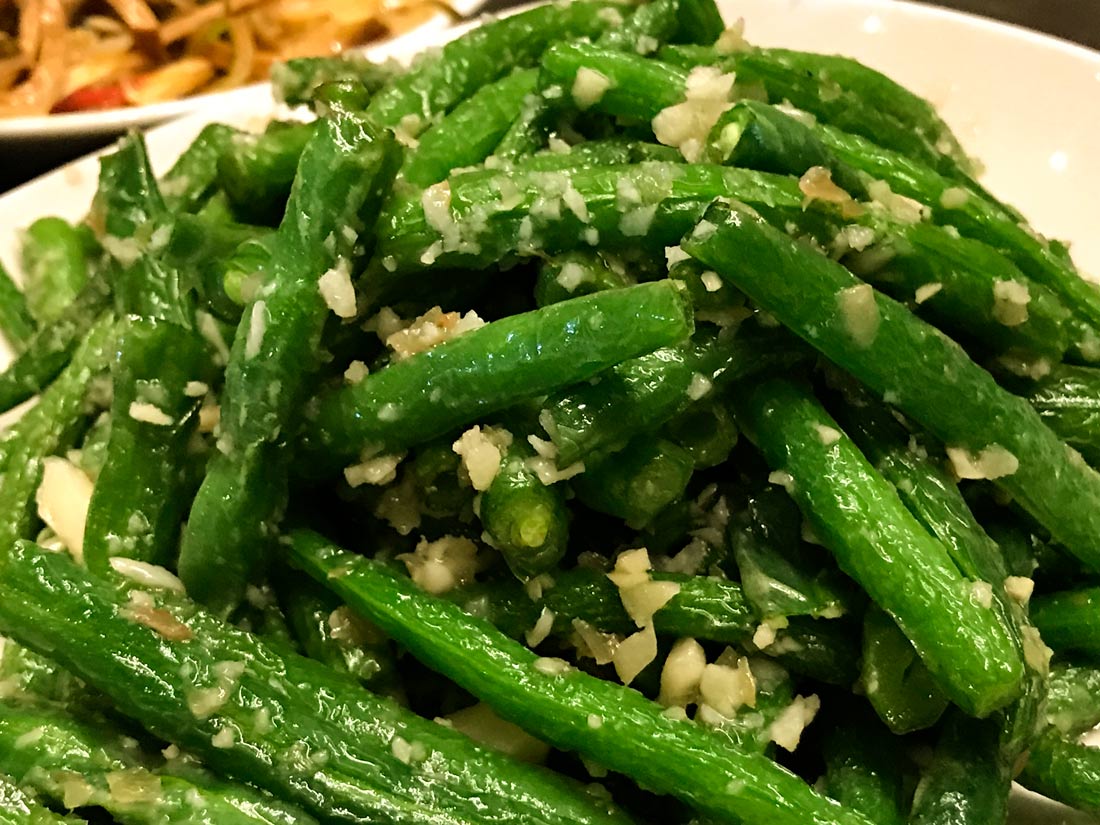
Green beans.

Noodles.
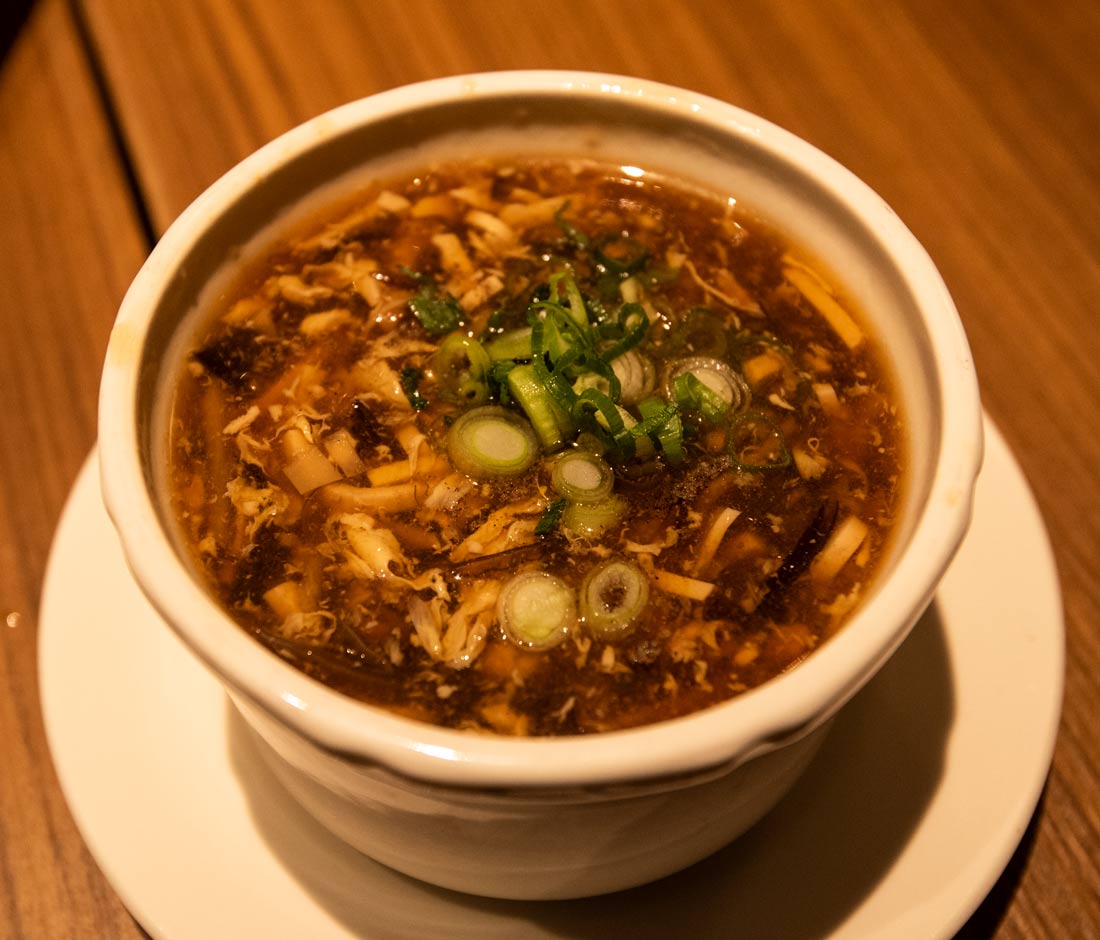
Above and below, soups.
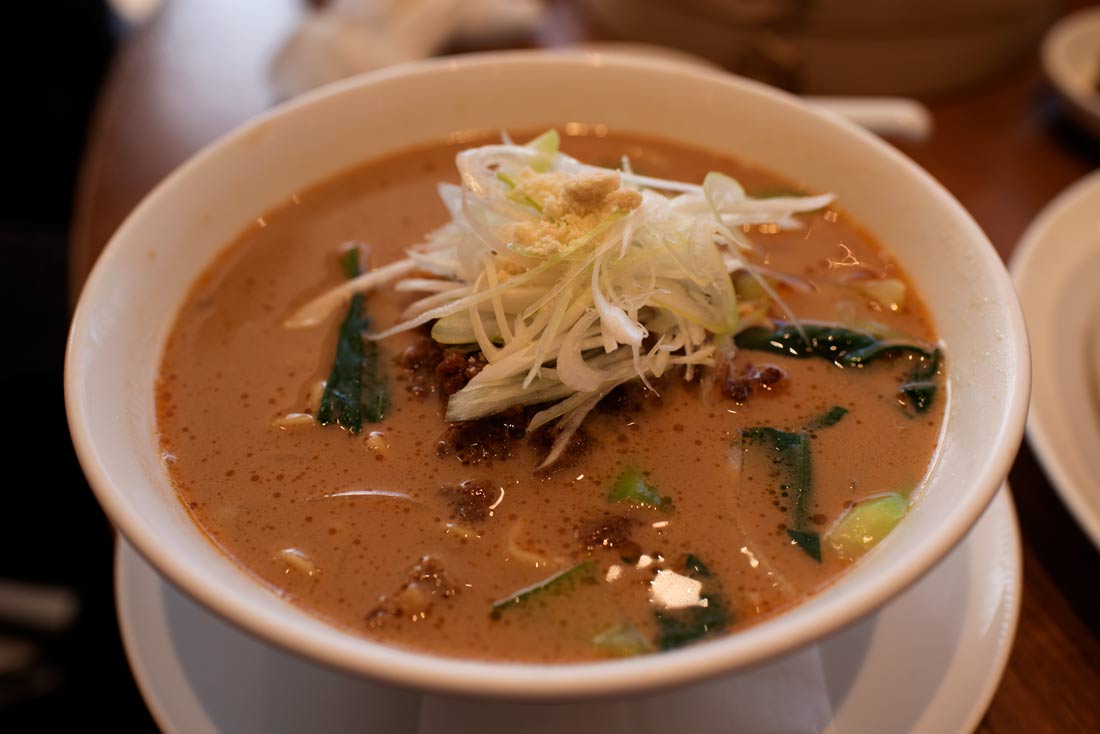
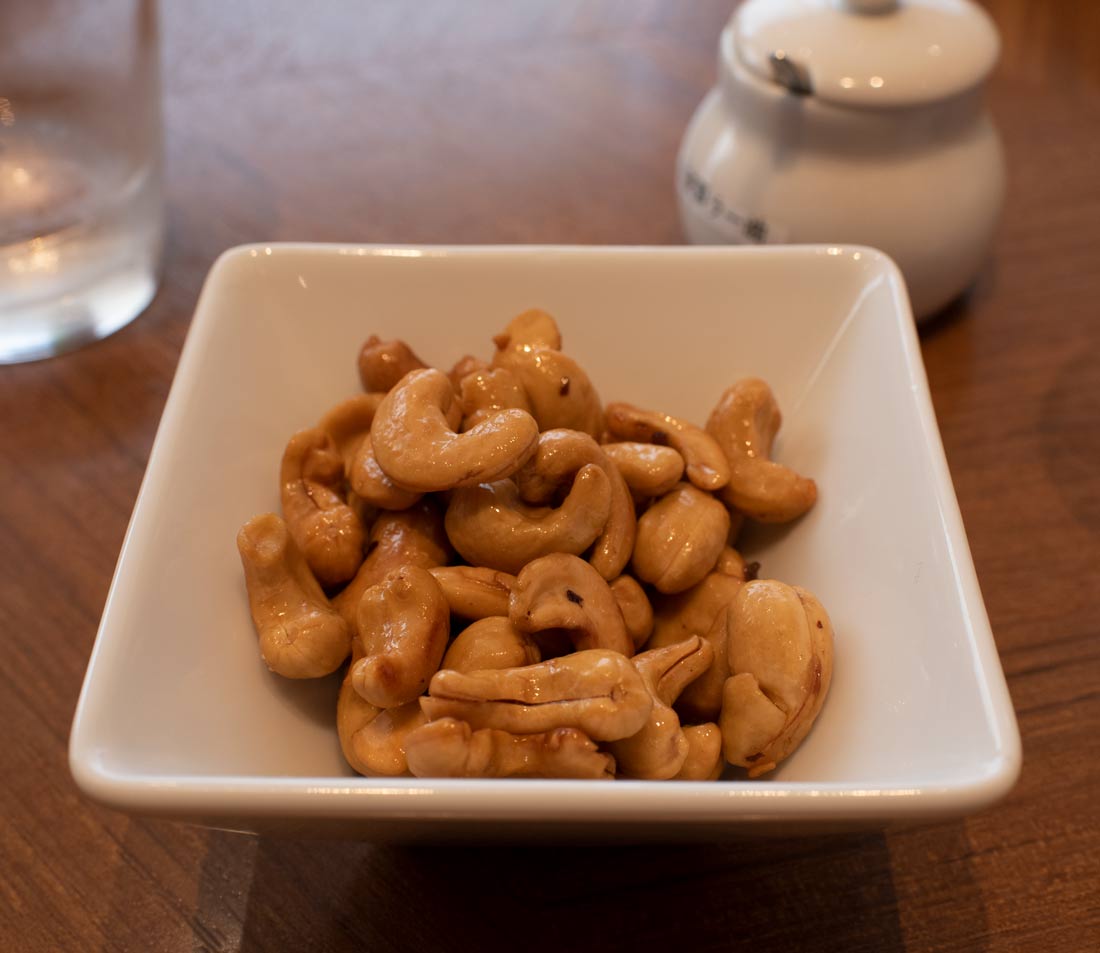
Stir-fried cashews.
The main downside to Din Tai Fung is its popularity. It’s not uncommon to wait for an hour and a half in line to get into one of the restaurants. If you’re a hardcore fan like I am, take something to read or plan to spend some time clearing up your backlog of social media on your phone while you wait.
Xiaolong bao are believed to have been invented by the owner of a restaurant in Shanghai, China, in the 1870s. The word "xiao" means "little," "long" means "basket," and "bao" means "bun" or "dumpling." The owner added aspic to his minced pork so that upon steaming, it would melt and fill the dumpling with soup. An alternative story is that the Qing dynasty emperor Qianlong (1711-1799) was traveling through Jiangsu province and was given xiaolong bao while in the city of Wuxi. He loved them, and they became famous. The “long” in xiaolong bao thus became associated with “dragon,” which is pronounced “long” as is the word for basket. Dragons were a symbol of China’s emperors. In 2006, the municipal government of Shanghai added xiaolong bao to its list of Shanghai’s protected traditional treasures.
Din Tai Fung represents a combination of several global cuisine trends – the restoration of ethnic cultural dishes, their globalization, culinary tourism and the development of a national Taiwanese cuisine out of the island’s many ethnic traditions.
The Nationalist government that took over Taiwan in 1949 positioned itself as representing China as a whole, not just Taiwan. At state banquets and on the menus of high-end restaurants and hotels, the most prominent cuisines of China appeared as well as being popular on the streets. Taiwanese food, on the other hand, was considered just one of many regional styles of food and the food of the common people of Taiwan. Hotels and high-end restaurants also served Japanese food, a legacy of Japanese rule in Taiwan between 1895 and 1945, and American food, the result of close ties between the United States and Taiwan and the presence of thousands of military personnel in Taiwan from 1954 to 1979.
In the 1980s and 1990s, Taiwan turned to promoting both agriculture and tourism on a national scale, including Taiwanese cuisine. It wasn’t until the 2000s, however, that popular Taiwanese cuisine began to appear on hotel and high-end restaurant menus. This accompanied a trend of democratization in Taiwan.
Taiwanese cuisine has been the theme of a number of internationally popular cookbooks in recent years, as Taiwan’s food has been promoted as a cultural product. As China’s and Taiwan’s ties have developed, their food ties have done the same with the establishment of Taiwanese restaurants such as Din Tai Fung in China. Some food critics believe that the xiaolong bao at Din Tai Fung’s Shanghai restaurant are superior to the xiaolong bao available at traditional Shanghai restaurants.
In 2000, the Democratic Progressive Party won election for the first time in Taiwanese history and added Taiwanese and native aboriginal foods to the menus of state banquets to emphasize the country’s multiculturalism. Taiwanese dishes served at state banquets also were sold in markets aimed at both domestic and international tourists. Tourists’ demands for authentic local foods resulted in a reinterpretation of what native Taiwanese cuisine is, giving everyday foods of working class people such as the cuisine served at Din Tai Fung an elevated status. The government, to promote Taiwanese culture and tourism, sponsors a number of festivals associated with food and promotes night markets as international tourist attractions.
Check out these related items
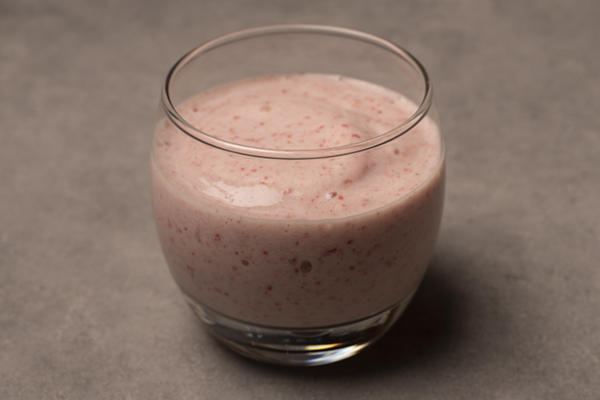
Fruit Drinks of Mexico and Asia
Delicious fruit drinks are ubiquitous at restaurants and street stands in Mexico, Taiwan and Southeast Asia. You can make them at home with our favorite recipes.

The World is Flat (Bread)
Flatbreads are oldest, easiest breads and the most modern - pizza and tortillas are among the most popular foods. See our recipes.
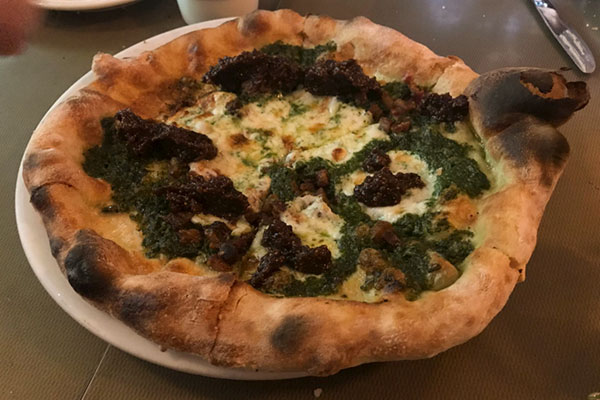
Good Things in Small Portions
Eva, a restaurant in Salt Lake City, serves a taste-testing meal on small plates, a welcome break from too much food and not enough variety.

Pizza on a Scale of One-to-Ken
If you're lucky enough to live in Portland, try Ken Forkish’s restaurant, Ken's Artisan Pizza. If not, try his great recipes.
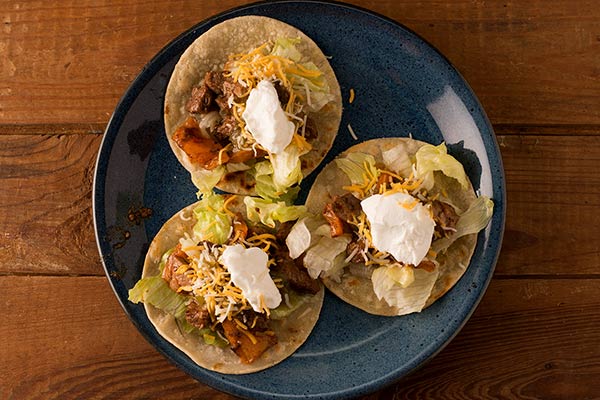
Favorite Sauces for Latin Dishes
Some of the best Latin foods can be made with easy commercial or homemade sauces that work in a variety of dishes.
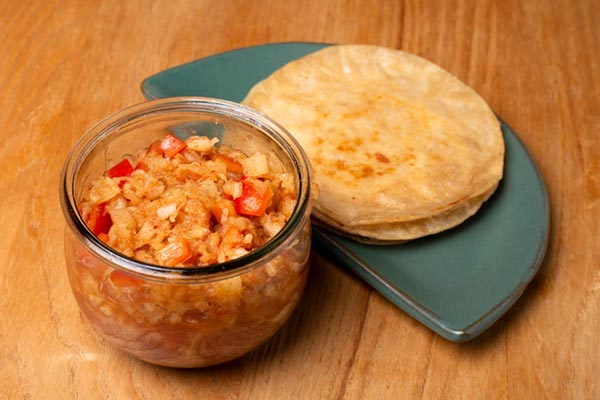
Salsa for the Holidays
Salsa is one of America's most loved foods. Here are some holiday fruit salsa recipes that are a nice change from tomato salsas.
